Sensor Sweep: D&D, Arthur Machen, Blood of the Serpent
Wednesday , 18, January 2023 Sensor Sweep Leave a commentFiction (Endless Bookshelf): In 1923, a century ago, Welsh author Arthur Machen was at the height of his literary reputation on both sides of the Atlantic. It had been a long path from his “horrible” juvenile poem Eleusinia (1881)(1881) and such early books as The Anatomy of Tobacco (1884) and the numerous translations of the 1880s and early 1890s. But with The Great God Pan (1894) and The Three Imposters (1895), Machen produced a small group of supernatural tales that shocked upon their first appearance and then proved to be enduring.
was at the height of his literary reputation on both sides of the Atlantic. It had been a long path from his “horrible” juvenile poem Eleusinia (1881)(1881) and such early books as The Anatomy of Tobacco (1884) and the numerous translations of the 1880s and early 1890s. But with The Great God Pan (1894) and The Three Imposters (1895), Machen produced a small group of supernatural tales that shocked upon their first appearance and then proved to be enduring.
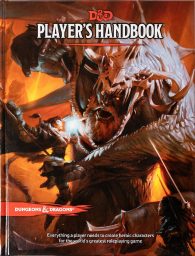 D&D (Ars Technica): For decades now, Wizards of the Coast (WotC) has made the core framework of its popular Dungeons & Dragons RPG (D&D) widely available to other game makers as part of an expansive, royalty-free Open Gaming License (OGL). But a planned update to the license imposes more restrictive terms and royalties of up to 25 percent for some revenue from large companies, according to an early leaked copy.
D&D (Ars Technica): For decades now, Wizards of the Coast (WotC) has made the core framework of its popular Dungeons & Dragons RPG (D&D) widely available to other game makers as part of an expansive, royalty-free Open Gaming License (OGL). But a planned update to the license imposes more restrictive terms and royalties of up to 25 percent for some revenue from large companies, according to an early leaked copy.
D&D (New Republic): Dungeons & Dragons is having a moment of sorts. While the iconic fantasy-themed role-playing game has always had a devoted fan base, recent years have seen it successfully break out into the cultural mainstream. Millions of Americans are buying its rule books. Stranger Things, the popular Netflix series, drew heavily upon its lore and aesthetic. Celebrities mention playing it while being interviewed on talk shows. A major film adaptation is set to be released later this year.
Authors (Grognardia): Tell me many tales, O benign maleficent daemon, but tell me none that I have ever heard or have even dreamt of otherwise than obscurely or infrequently. Nay, tell me not of anything that lies between the bourns of time or the limits of space.
that I have ever heard or have even dreamt of otherwise than obscurely or infrequently. Nay, tell me not of anything that lies between the bourns of time or the limits of space.
Conan (Paperback Warrior): S.M. Stirling 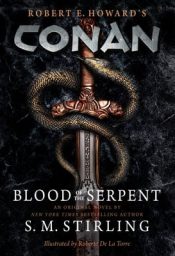 (Stephen Michael Stirling, b. 1953) is a Canadian-American science-fiction and fantasy author. His literary work includes the Draka, Fifth Millennium, Shadowspawn, and Emberverse series titles. He also co-authored The General series with David Drake and teamed with Jerry Pournelle for two Falkenberg’s Legion books. My first experience with Stirling is his recent Conan novel, Blood of the Serpent, published by Titan Books in 2022. It is the first official Conan novel since 2011’s novelization of Conan the Barbarian.
(Stephen Michael Stirling, b. 1953) is a Canadian-American science-fiction and fantasy author. His literary work includes the Draka, Fifth Millennium, Shadowspawn, and Emberverse series titles. He also co-authored The General series with David Drake and teamed with Jerry Pournelle for two Falkenberg’s Legion books. My first experience with Stirling is his recent Conan novel, Blood of the Serpent, published by Titan Books in 2022. It is the first official Conan novel since 2011’s novelization of Conan the Barbarian.
Comic Books (Dark Worlds Quarterly): Sword & Sorcery at Warren in 1972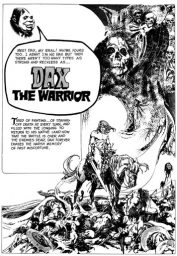 could have been called “The Year of Maroto”. Esteban Maroto, with his luxurious style, did nine of the seventeen stories. His series of “Dax the Damned” begin in Eerie in 1972. For many, this series is the one they think of when you say “Warren Sword & Sorcery”. Dax is sometimes credited with being the first series character, but this isn’t true. Thane (created by Archie Goodwin) and Amazonia (created by Gardner F. Fox), predate Dax. Maroto wrote and drew the Dax strips. Writing wasn’t his strong suit so Budd Lewis would later take over scripting.
could have been called “The Year of Maroto”. Esteban Maroto, with his luxurious style, did nine of the seventeen stories. His series of “Dax the Damned” begin in Eerie in 1972. For many, this series is the one they think of when you say “Warren Sword & Sorcery”. Dax is sometimes credited with being the first series character, but this isn’t true. Thane (created by Archie Goodwin) and Amazonia (created by Gardner F. Fox), predate Dax. Maroto wrote and drew the Dax strips. Writing wasn’t his strong suit so Budd Lewis would later take over scripting.
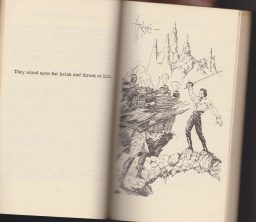 Robert E. Howard (Sprague de Camp Fan): There were three Centaur Press Solomon Kane books. The Moon of Skulls went through 3 distinct printings. The first printing was cover priced for 60 cents. The second printing added “SECOND BIG EDITION” on the cover and was priced at $1.25. Other than that cover blurb and the price increase the two versions are exactly the same (including back cover and house ads.)
Robert E. Howard (Sprague de Camp Fan): There were three Centaur Press Solomon Kane books. The Moon of Skulls went through 3 distinct printings. The first printing was cover priced for 60 cents. The second printing added “SECOND BIG EDITION” on the cover and was priced at $1.25. Other than that cover blurb and the price increase the two versions are exactly the same (including back cover and house ads.)
Firearms (Field & Stream): Though some manufacturers introduce new rifles mid-year, many follow the tradition of launching new products at the annual SHOT (Shooting, Hunting, Outdoor Trade) show each January. Hunters and shooters anticipate these announcements with the hopes of seeing the rifles they’ve been dreaming of finally becoming a reality. We hope for things like the reintroduction of the Savage 99, a brand new bolt-action in .358 Winchester, or something so new and so exciting we just can’t live without it.
rifles mid-year, many follow the tradition of launching new products at the annual SHOT (Shooting, Hunting, Outdoor Trade) show each January. Hunters and shooters anticipate these announcements with the hopes of seeing the rifles they’ve been dreaming of finally becoming a reality. We hope for things like the reintroduction of the Savage 99, a brand new bolt-action in .358 Winchester, or something so new and so exciting we just can’t live without it.
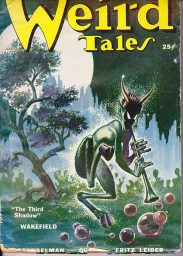 Artists (DMR Books): Kelly–despite his iconic SF status—actually began his career at Weird Tales in 1950. He painted a legendary cover–“The Piper”–for WT editor, Dorothy McIllwraith, and then painted a new version for the editors of the revived Weird Tales in 1990. Thereon lies a tale, sword-brothers. I learned of it by way of the estimable Ralph E. Vaughan’s Book Scribbles blog. Here is his account:
Artists (DMR Books): Kelly–despite his iconic SF status—actually began his career at Weird Tales in 1950. He painted a legendary cover–“The Piper”–for WT editor, Dorothy McIllwraith, and then painted a new version for the editors of the revived Weird Tales in 1990. Thereon lies a tale, sword-brothers. I learned of it by way of the estimable Ralph E. Vaughan’s Book Scribbles blog. Here is his account:
Pulp (The Obelisk): Owing to the enduring popularity of H.P. Lovecraft and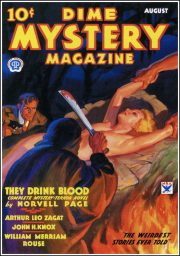 Robert E. Howard, many of the New Pulpsters (my semi-official name for the new wave of dissident pulp scribes currently taking over the world) tend to have a Weird Tales-centric myopathy. Yes, it is without question that the magazine overseen by editors Edwin Baird and Farnsworth Wright was the most trailblazing publication during pulp’s golden years.
Robert E. Howard, many of the New Pulpsters (my semi-official name for the new wave of dissident pulp scribes currently taking over the world) tend to have a Weird Tales-centric myopathy. Yes, it is without question that the magazine overseen by editors Edwin Baird and Farnsworth Wright was the most trailblazing publication during pulp’s golden years.
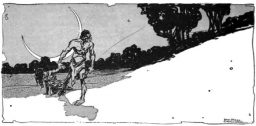 Fiction (Dark Worlds Quarterly): The name Jack London immediately conjures visions of the Klondike: dogsleds, gold mines and men and women trapped in the Darwinian struggle to survive against the elements and each other. London will be read for centuries for these stories. What some readers may not be aware of is that London was a magazine writer. And that means writing whatever editors are buying. In between tales of the Gold Rush London wrote other kinds of stories.
Fiction (Dark Worlds Quarterly): The name Jack London immediately conjures visions of the Klondike: dogsleds, gold mines and men and women trapped in the Darwinian struggle to survive against the elements and each other. London will be read for centuries for these stories. What some readers may not be aware of is that London was a magazine writer. And that means writing whatever editors are buying. In between tales of the Gold Rush London wrote other kinds of stories.
Fiction (Book Scribbles): As most of you know, not only am I a huge fan of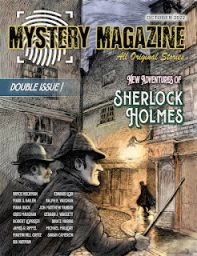 the Sherlock Holmes stories and films, I have written a fair share of stories featuring the Great Detective myself. I was also the first to introduce Sherlock Holmes to fantasy writer HP Lovecraft and his cadre of monster-gods, which I did in 1983 with “The Adventure of the Ancient Gods.” I’ve published two collections of Holmes-related tales and provided a handful of stories for anthologies edited by others. The latest example of the latter is “The Adventure of the Five Sherlocks” in Mystery Magazine (formerly Mystery Weekly Magazine), a Canadian periodical, for its October 2022 number.
the Sherlock Holmes stories and films, I have written a fair share of stories featuring the Great Detective myself. I was also the first to introduce Sherlock Holmes to fantasy writer HP Lovecraft and his cadre of monster-gods, which I did in 1983 with “The Adventure of the Ancient Gods.” I’ve published two collections of Holmes-related tales and provided a handful of stories for anthologies edited by others. The latest example of the latter is “The Adventure of the Five Sherlocks” in Mystery Magazine (formerly Mystery Weekly Magazine), a Canadian periodical, for its October 2022 number.
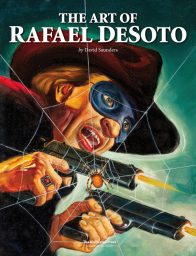 Art (Pulp Super-Fan): When it comes to pulp covers of The Spider, the artist I think of is Rafael DeSoto (1904-92). In particular, the cover from October 1941, which he did reproductions of. During his career, he did pulp covers from 1930 to 1954. When he tried doing covers initially, things didn’t go well with Street & Smith. Instead, they hired him for the pen & ink department, where he worked for two years, honing his craft. His first pulp covers would be for other publishers, like Dell.
Art (Pulp Super-Fan): When it comes to pulp covers of The Spider, the artist I think of is Rafael DeSoto (1904-92). In particular, the cover from October 1941, which he did reproductions of. During his career, he did pulp covers from 1930 to 1954. When he tried doing covers initially, things didn’t go well with Street & Smith. Instead, they hired him for the pen & ink department, where he worked for two years, honing his craft. His first pulp covers would be for other publishers, like Dell.
Gaming (Walker’s Retreat): What do the following RPGs have in common?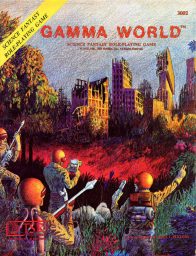 All three are “post catalysmic war” settings. This is the “not fantasy” version of a typical D&D campaign, and therefore everything you learn about campaign play in a real D&D campaign transfers over to these RPGs.
All three are “post catalysmic war” settings. This is the “not fantasy” version of a typical D&D campaign, and therefore everything you learn about campaign play in a real D&D campaign transfers over to these RPGs.
Fiction (Strange at Ecbatan): Here’s another review of a 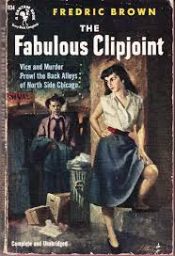 postwar crime novel, in this case a very pure example of “noir” fiction (though am I supposed to use noir in talking about books rather than film?) The Fabulous Clipjoint was first published as “Dead Man’s Indemnity” in Mystery Book Magazine in 1946, the same year as my previous crime novel, Crows Don’t Count, by “A. A. Fair”. The book version, expanded and with an infinitely superior (and less spoilery) title, came out from E. P. Dutton in 1947.
postwar crime novel, in this case a very pure example of “noir” fiction (though am I supposed to use noir in talking about books rather than film?) The Fabulous Clipjoint was first published as “Dead Man’s Indemnity” in Mystery Book Magazine in 1946, the same year as my previous crime novel, Crows Don’t Count, by “A. A. Fair”. The book version, expanded and with an infinitely superior (and less spoilery) title, came out from E. P. Dutton in 1947.
Magazines (Men’s Pulp Mags): Issue #6 of the MEN’S ADVENTURE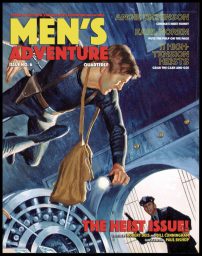 QUARTERLY is now available on Amazon in the U.S. and worldwide and via my online bookstore. This blog post is the first of several I plan to write about MAQ #6. I decided to do some in-depth posts about it to give people who haven’t seen any MAQs a better sense of what we include in each issue. The images I’ll show are primarily scans of pages in MAQ #6. The text about the stories is taken from the introductions I write for each one to provide more context about them and the writers, artists, and magazines involved.
QUARTERLY is now available on Amazon in the U.S. and worldwide and via my online bookstore. This blog post is the first of several I plan to write about MAQ #6. I decided to do some in-depth posts about it to give people who haven’t seen any MAQs a better sense of what we include in each issue. The images I’ll show are primarily scans of pages in MAQ #6. The text about the stories is taken from the introductions I write for each one to provide more context about them and the writers, artists, and magazines involved.
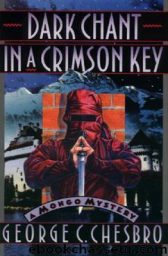 Fiction (Bloody Spicy Books): On one of these such trips I found myself with a copy of “Shadow of a Broken Man” by George C. Chesbro starring the world-renowned criminologist, former circus performer/martial artist turned private eye Dr. Robert “Mongo the Magnificent” Frederickson, who also happened to be a dwarf. I cracked that book open and it in turned cracked my mind open.
Fiction (Bloody Spicy Books): On one of these such trips I found myself with a copy of “Shadow of a Broken Man” by George C. Chesbro starring the world-renowned criminologist, former circus performer/martial artist turned private eye Dr. Robert “Mongo the Magnificent” Frederickson, who also happened to be a dwarf. I cracked that book open and it in turned cracked my mind open.
Firearms (Frontier Partisans): My sojourn in the 17th century meant I inevitably encountered the wheellock. There was a wheellock rifle on the Mayflower, a rifled carbine believed to have been owned by John Alden of the Plymouth Colony. Known as The Mayflower Gun, it is in the NRA’s National Firearms Museum. I have an affection for the wheellock, because it was a signature weapon of my favorite fictional early modern Frontier Partisan Mattias Tannhauser (The Religion, Twelve Children of Paris).
Please give us your valuable comment